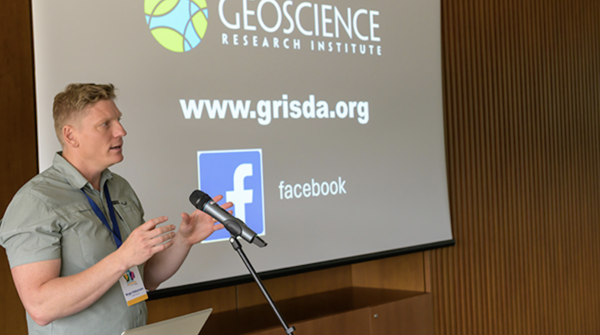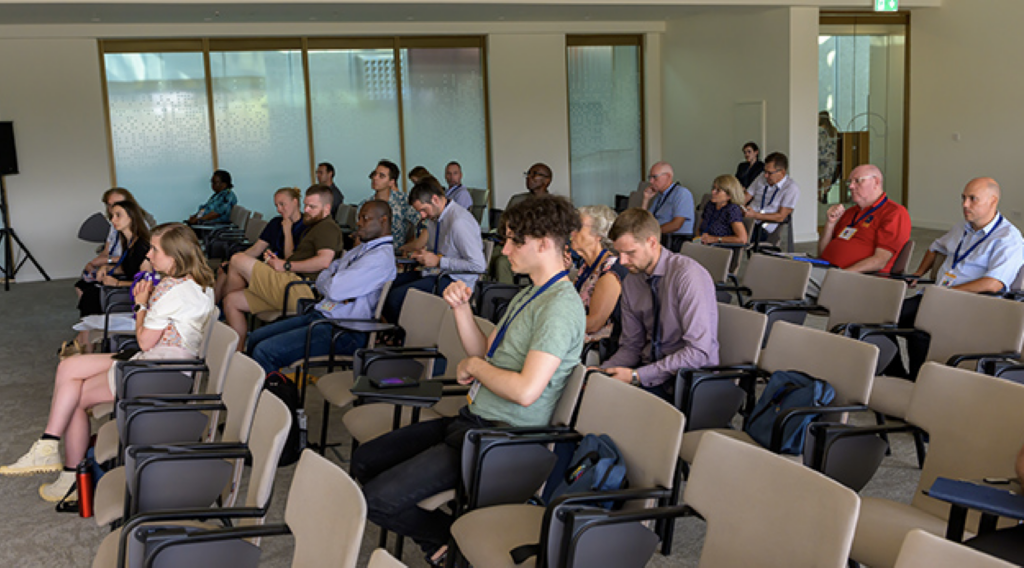Adventist Geologist Calls into Question Scientific Assumptions
Birgir Óskarsson highlights the benefits of interacting with his secular colleagues.
September 12, 2024 | Serbia | Marcos Paseggi with tedNEWS, and Adventist Review
Birgir Óskarsson, a Seventh-day Adventist geologist, works in a secular environment in his native country of Iceland. Óskarsson, whose job includes volcano eruption mapping and monitoring for a government entity, led a breakout session at the 2024 European Pastors’ Council (EPC) on August 29 in Belgrade, Serbia.
During his presentation, Óskarsson talked about current geological issues and urged Bible-believing Christians to continue exploring and questioning the evidence for a worldwide flood.
“Our faith is not just a theological concept; we believe it’s tied to real history,” he said. “But today, the conventional scientific view is very different from the biblical view.”

“How is it possible to have two layers (with supposedly one million years between them) with no major sedimentary activity?” Adventist geologist Birgir Óskarsson asked. [Photo: Tor Tjeransen] Adventist Media Exchange (CC BY 4.0)
The most prevalent scientific view of earth’s geological history has been uniformitarianism — the idea that changes in the earth’s crust happen through lengthy, steady, ongoing processes — and “deep time,” meaning small changes over millions of years. Bible-believing Christians, on the other hand, adhere to catastrophism, which the Merriam-Webster dictionary defines as “a geological doctrine that changes in the earth’s crust have in the past been brought about suddenly by physical forces operating in ways that cannot be observed today.”
The challenge with catastrophism, Óskarsson explained, is that catastrophic events on a massive scale have never been observed by human beings. “So, we have to study what we see today,” he said, “and through mapping and geological observations, try to understand what we are seeing.”
Volcanic Eruptions and Lava Sheets
Óskarsson explained that large-scale volcanic eruptions are common in the geological record, rather than rare. This allows scientists to study the lava flows and layers from the past. Often, the analysis shows massive, uniform lava sheets stacked one on top of the other, with no signs of erosion or life between the layers. This makes it hard to explain them being formed as a result of slow, uniform processes.
“The current consensus reflects a shift,” Óskarsson noted, “away from strict uniformitarianism towards some form of catastrophism, although scientists still believe these events are separated by millions of years.”
Regarding sedimentary layers, Óskarsson explained, it’s very common to find large burial sites — essentially graveyards — of animals and plants in the geological record, which suggests rapid formation. “And usually, the preservation of these fossils is so exquisite … even soft shells are perfectly preserved, which implies a rapid burial, a rapid deposition to preserve them,” he said.

Birgir Óskarsson’s workshop explored “Where Are Geological and Biological Sciences Heading on Origins?” [Photo: Tor Tjeransen] Adventist Media Exchange (CC BY 4.0)
Asking Relevant Questions
Óskarsson highlighted the importance of questioning current interpretations of sediment chronology by asking, “Do I see the time you are suggesting?” He noted that scientific claims of time periods should align with observable evidence.
In practice, he explained, considering how time affects sediments reveals that significant changes can occur in just 100 years due to weather and other factors. “How is it possible to have two layers (with supposedly one million years between them) with no major sedimentary activity?” he asked.
Óskarsson cited Surtsey Island, which appeared off the coast of Iceland suddenly in 1963 due to volcanic activity. He explained that erosion is allowing for the growth of trees and other organisms, as driftwood has been carried in from the ocean, just 60 years after the eruption. Lava flows exhibit a similar pattern and composition, which, according to Óskarsson, is inconsistent with long periods between lava sheets.
In summary, a careful analysis of lava sheets, sedimentary rocks, and other geological phenomena led Óskarsson to conclude that “the [long] time assigned to them simply does not exist. We just don’t see the time [suggested].”
Óskarsson acknowledged that there are still questions for those who advocate a catastrophic view involving shorter periods of time. However, he believes that observations are consistent with a rapid succession of events that cannot be explained by applying a uniformitarian model spanning millions of years.
Where Science Is Heading
Concluding his presentation, Óskarsson explained that current analysis of scientific trends reveals a cyclical movement in the consensus back toward catastrophism.
Several centuries ago, scientists accepted the idea of a great cataclysm, such as the biblical flood, but over time shifted to a view of multiple catastrophisms, and later to the uniformitarianism of the 19th century. Recent scientific studies have led to a resurgence of what is known as neo-catastrophism, although these catastrophic events are still believed to be separated by millions of years.
“And perhaps we might return to a perspective that better addresses the contradictions observed in the geological record,” Óskarsson said.
The original version of this story was posted on the Trans-European Division news site.